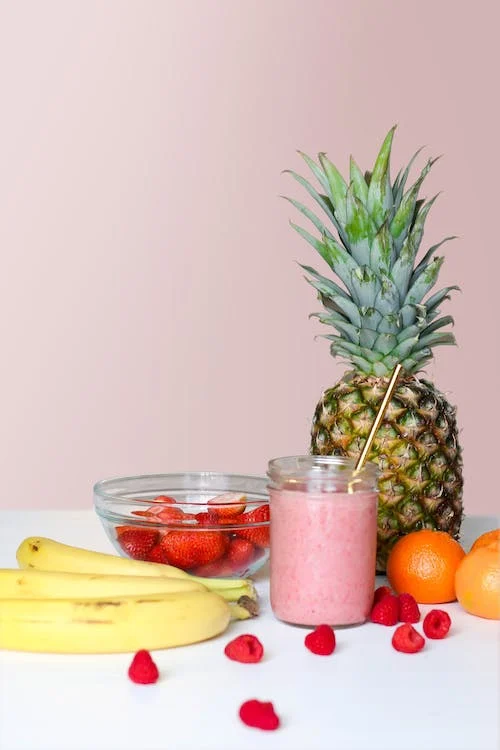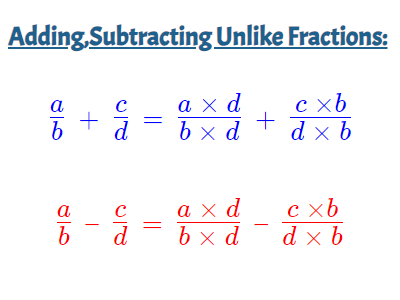Although not inherently difficult most of the time, dealing with adding and subtracting fractions examples can still sometimes catch some students out on occasion.
On this page we see how to add and subtract fractions fairly quickly and easily.
Examples
1.1
\frac{1}{7} + \frac{3}{7}
( For sums such as this, the addition only needs to be applied to the top numbers, the numerators. The denominator 11 stays the same. )
\frac{1}{7} + \frac{3}{7} = \frac{1 \space + \space 3}{7} = \frac{4}{7}
1.2
\frac{6}{11} − \frac{1}{11} = \frac{5}{11}
Adding and Subtracting Unlike Fractions
The adding and subtracting fractions examples above were fairly straightforward as the fractions involved were like fractions and thus had the same denominator.
There are times though when the fractions to be added or subtracted are unlike fractions and thus have different denominators.
For example. \frac{2}{3} + \frac{5}{6} = ?
We want to have both denominators on the bottom be the same number.
Meaning that they will have a common denominator.
An effective method is to multiply the top and bottom of each fraction, by the bottom number of the other fraction.
So for \frac{2}{3} + \frac{5}{6}.
This is:
\frac{2 \space \times \space 6}{3 \space \times \space 6} + \frac{5 \space \times \space 3}{6 \space \times \space 3} = \frac{12}{18} + \frac{15}{18} = \frac{27}{18} = \frac{9}{6}
Examples
2.1
\frac{3}{10} + \frac{5}{8}
Solution
\frac{3 \space \times \space 8}{10 \space \times \space 8} + \frac{5 \space \times \space 10}{8 \space \times \space 10} = \frac{24}{80} + \frac{50}{80} = \frac{64}{80}
Which can be simplified to \frac{4}{5}.
It’s often the case with this approach, that the fraction addition answer can be simplified further.
2.2
\frac{7}{8} − \frac{5}{6}
Solution
\frac{7 \space \times \space 6}{8 \space \times \space 6} − \frac{5 \space \times \space 8}{6 \space \times \space 8} = \frac{42}{48} − \frac{40}{48} = \frac{2}{48} = \frac{1}{24}
2.3
A smoothie served at a juice bar is made from ingredients Orange, Pineapple and Banana.

If \frac{1}{3} is Orange and \frac{1}{4} is Pineapple, what fraction of the drink is Banana?
Solution
Firstly we want to establish what fraction of the cocktail is Orange and Pineapple, by adding them together.
(ORANGE) (PINEAPPLE)
\frac{1 \space \times \space 4}{3 \space \times \space 4} + \frac{1 \space \times \space 3}{4 \space \times \space 3} = \frac{4}{12} + \frac{3}{12} = \frac{7}{12}
So now to establish what fraction of the drink is Orange, we just subtract \frac{7}{12} from 1.
All the ingredients together make 1 juice drink.
1 − \frac{7}{12} = \frac{12}{12} − \frac{7}{12} = \frac{5}{12}
Thus the fraction of the fruit drink that is Orange is \frac{5}{12}.
Adding and Subtracting Fractions Examples
Unlike Summary

- Home ›
- Fractions & Decimals › Add and Subtract Fractions